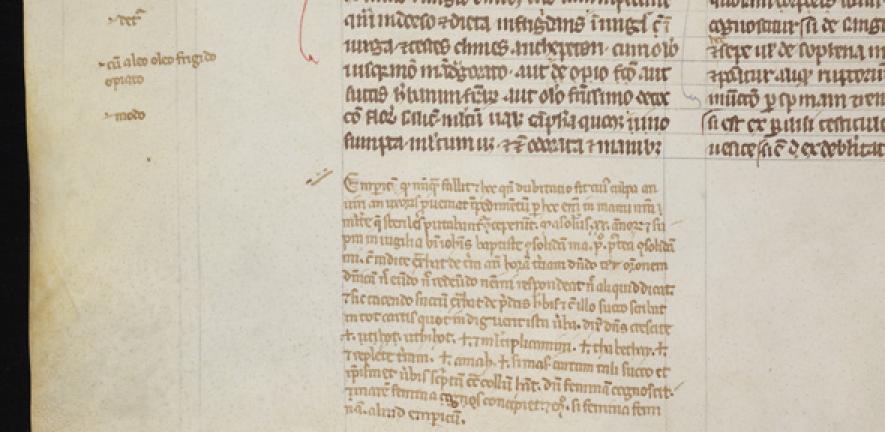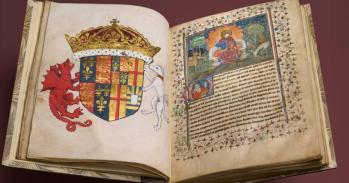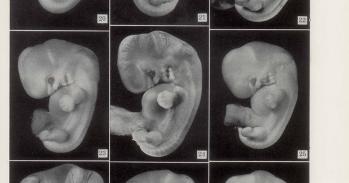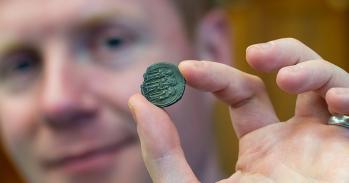
A study of one of the most important medieval texts devoted to women’s medicine has opened a window into the many rituals associated with conception and childbirth. Research into the shifting communication of knowledge contributes to a wider project looking at the history of reproduction from ‘magical’ practices right through to IVF.
A study of one of the most important medieval texts devoted to women’s medicine has opened a window into the many rituals associated with conception and childbirth. Research into the shifting communication of knowledge contributes to a wider project looking at the history of reproduction from ‘magical’ practices right through to IVF.
Charms, prayers, amulets and prayer-rolls played important roles within the sphere of human reproduction at a time when male impotence or infertility, and the perils of childbirth, were not just matters of personal anxiety but vitally affected the legality of marriage and inheritance.
The medicalisation of life’s beginnings and endings has not diminished the human need for ritual. Earlier this month a photograph of a newborn baby still attached to his mother’s placenta, with the umbilical cord arranged to spell the word ‘love’, was posted on the web. The image, by an Australian photographer, went viral. The online discussion drew attention to the age-old Maori tradition of returning the placenta to the land and to the many rituals still associated with childbirth around the world.
While many birthing traditions are passed on orally, others entered the realms of literature well before the advent of printing. One of the many treasures among the manuscripts belonging to Pembroke College, Cambridge is a compendium of medical and surgical knowledge written by Gilbertus Anglicus (Gilbert the Englishman) around the middle of the 13th century. The text is titled Compendium medicine and is written in a near contemporary hand in two columns, probably by a scribe from the south of France.
Later in the same century, this manuscript (now kept in Cambridge University Library) found its way to England. We know this because there are notes made by an owner writing in an English hand. The Latin text of Gilbertus’s Compendium medicine was the first great survey of medical knowledge to have been assembled after the arrival of Greek and Arabic texts in Western Europe, and was tremendously popular. It represents a key source for historians of medical knowledge in the Middle Ages.
Particularly fascinating for historians interested in the communication of practical medical knowledge are additions to the text written in the margins of the Pembroke manuscript (MS 169). Some of these “postscripts” are valuable evidence for how orally transmitted traditions gradually entered written records – and became embedded in later copies of medical texts.
At the bottom of a page of the manuscript is an empericum (remedy) neatly written in the margin, perhaps even by Gilbertus himself, soon after the original text was compiled. It sets out, in considerable detail, a prescription for the treatment of sterility that “never fails” (“qui numquam fallit”). This personal witness to the remedy’s success (“through this treatment by our hand many who were thought to be sterile conceived”) inspired someone to add the remedy in the margin of a manuscript written at some expense by a professional scribe.
Other entries in the margins of Compendium medicine credit remedies to “a soldier”, or “a Saracen”, but scholars don’t know who told Gilbertus this particular empericum.
To summarise the remedy: a man aged 20 years or more should, at a precisely designated hour and while reciting the Lord’s prayer, pull from the ground two plants (comfrey and daisy) and extract their juices. These juices should be used to inscribe the words of a well-known directive from Genesis (“The Lord said: Increase and multiply and fill the earth”), together with some magical names, on an amulet to be worn during sexual intercourse. If the verse is worn by the man, the union will produce a boy, if by the woman, a girl.
In subsequent copies of Gilbertus’s Compendium medicine, the same prescription appears in the main body of the author’s text, and so it found its way into print in the 16th century. Its later readers would have had no idea that this remedy was not part of the original version and may have first circulated by word of mouth.
In an article published in a special issue of the Bulletin of the History of Medicine, Peter Murray Jones and Lea Olsan (Department of History and Philosophy of Science) draw on dozens of examples from manuscripts circulating in England between 900 and 1500 to show how medieval men and women used performative rituals to negotiate the dangers and difficulties of conception and childbirth.
Charms, prayers, amulets and prayer-rolls played important roles within the sphere of human reproduction at a time when male impotence or infertility, and the perils of childbirth, were not just matters of personal anxiety but vitally affected the legality of marriage and the inheritance of land or noble status.
Jones and Olsan illustrate, through their analysis of surviving documentation, the ways in which performative rituals combine spoken words and actions which drew on Christian liturgy, the intercession of saints, as well as occult symbols and powers to protect mothers and children or to ensure fertility. Repeated use of the rituals added to their force. Some were extremely long-lived, but at different times might involve different actors – monks, priests, or friars as well as local healers, midwives, doctors or the lay owners of remedy books.
One of the earliest and most important of the sources for these rituals is the Trotula collection of texts – a compendium of women’s medicine dating from the 12th century when it was collated in Salerno (Italy), and later assumed to have been written by a female physician.
Drawing on a detailed study of this collection by historian Monica Green, Jones and Olsan cite three rituals to facilitate a delayed birth or expel a dead fetus. One such remedy, for difficult birth, requires the woman to eat the sator arepo tenet opera rotas palindrome (a phrase that could be written out as a magic square of letters) written in butter or cheese. A second specifies a string of letters, this time to be drunk with the milk of another woman. A third ritual employs the skin of a snake as a birthing girdle, to be tied around the mother-to-be.
This special issue of the Bulletin of the History of Medicine was edited by members of the Department of History and Philosophy of Science in Cambridge (Nick Hopwood, Peter Murray Jones, Lauren Kassell and Jim Secord).Their introduction explains how important the whole business of communication has been to the history of reproduction. The other articles in the issue explore communication and reproduction from a variety of angles and in different periods. See the Q&A at the JHU Press blog.
The special issue springs from a larger Cambridge project that looks at the long-term shifts in understandings and practices of reproduction. Funded by a Wellcome Trust Strategic Award, the historians involved in this ‘Generation to Reproduction’ programme are offering fresh perspectives on issues ranging from ancient fertility rites to IVF. They are thus reassessing the history of reproduction over the long term.

The text in this work is licensed under a Creative Commons Attribution 4.0 International License. For image use please see separate credits above.




